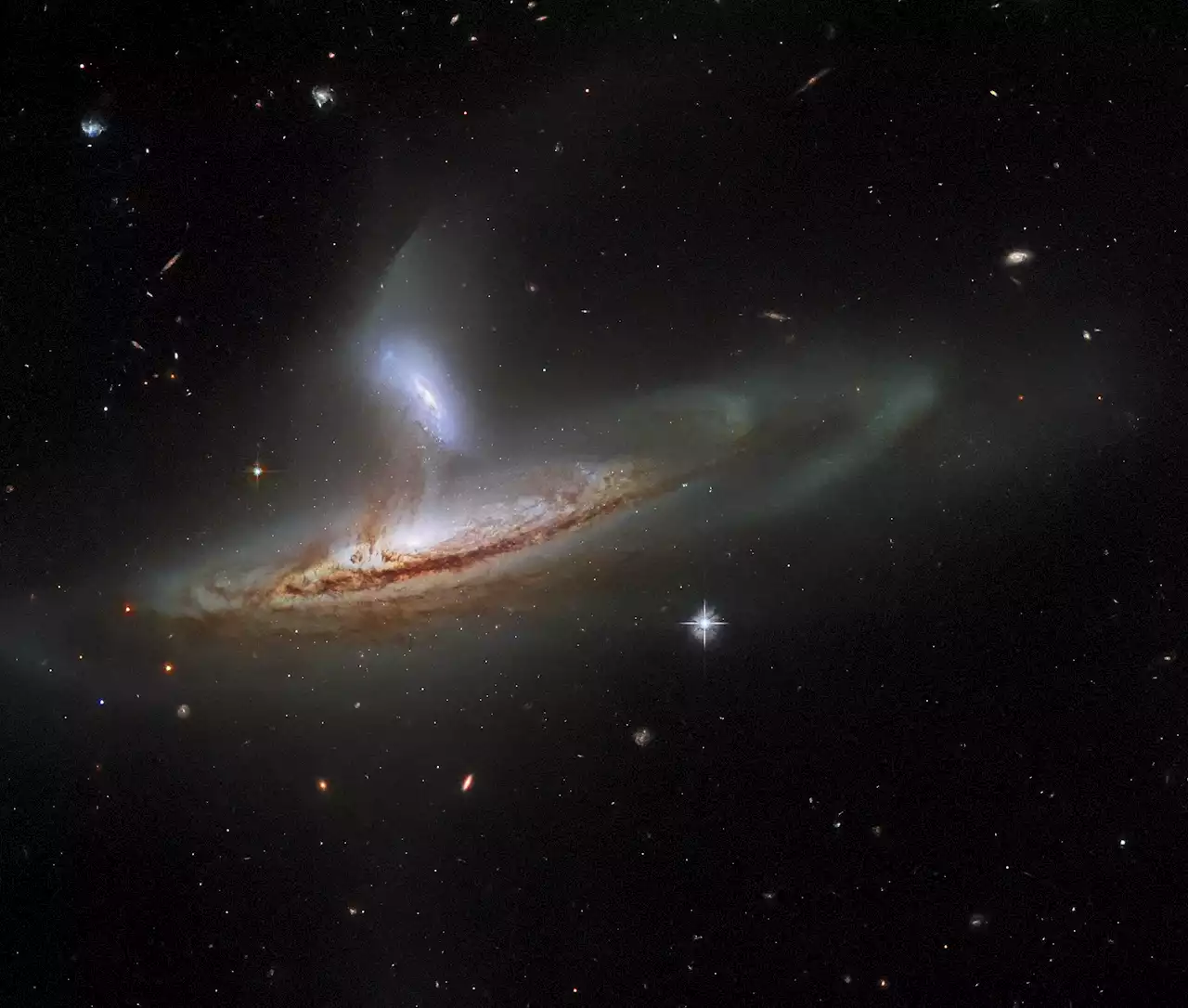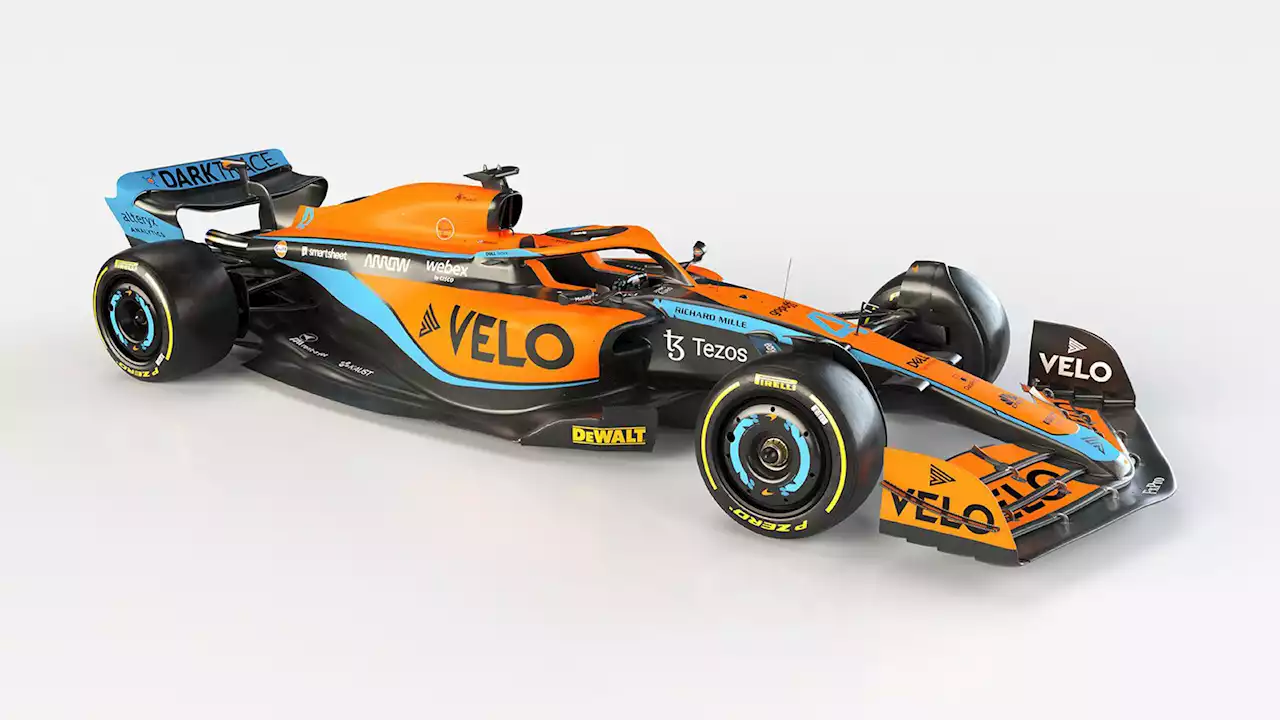The ongoing interaction between two galaxies 320 million light-years away has been captured in a gorgeous Hubble image.
produces a lot of high-energy light in the form of X-rays, and heat in infrared wavelengths; Hubble's image is in optical light, which dust in galactic nuclei tends to obscure.
In addition, you can clearly see streams of dust and glowing material passing between the two galaxies, likely from the lower-mass object to the higher-mass object."When two galaxies interact, gas, dust and even entire solar systems will be drawn away from one galaxy towards the other by these tidal forces,""This process can actually be seen in action in this image – delicate streams of matter have formed, visibly linking the two galaxies.
If the two galaxies draw close enough together, eventually they'll merge, their supermassive black holes coming together in a massive event that will send
Österreich Neuesten Nachrichten, Österreich Schlagzeilen
Similar News:Sie können auch ähnliche Nachrichten wie diese lesen, die wir aus anderen Nachrichtenquellen gesammelt haben.
 Hubble spots a rare pair of highly active galaxies | Digital TrendsThis week's image from the Hubble Space Telescope shows a pair of interacting galaxies, collectively known as Arp 282.
Hubble spots a rare pair of highly active galaxies | Digital TrendsThis week's image from the Hubble Space Telescope shows a pair of interacting galaxies, collectively known as Arp 282.
Weiterlesen »
 Hubble spots a rare pair of highly active galaxies | Digital TrendsThis week's image from the Hubble Space Telescope shows a pair of interacting galaxies, collectively known as Arp 282.
Hubble spots a rare pair of highly active galaxies | Digital TrendsThis week's image from the Hubble Space Telescope shows a pair of interacting galaxies, collectively known as Arp 282.
Weiterlesen »
 'Batgirl' Set Photos Reveal First Look at Michael Keaton's Batman'Batgirl' set images reveal Michael Keaton's Caped Crusader.
'Batgirl' Set Photos Reveal First Look at Michael Keaton's Batman'Batgirl' set images reveal Michael Keaton's Caped Crusader.
Weiterlesen »
 Two Protoclusters of Galaxies Spotted in Early Universe | Sci-News.comEach of the two newly-discovered protoclusters, MAGAZ3NE J095924+022537 and MAGAZ3NE J100028+023349 (MAGAZ3NE J0959 and MAGAZ3NE J1000 for short), hosts an ultramassive galaxy in its center.
Two Protoclusters of Galaxies Spotted in Early Universe | Sci-News.comEach of the two newly-discovered protoclusters, MAGAZ3NE J095924+022537 and MAGAZ3NE J100028+023349 (MAGAZ3NE J0959 and MAGAZ3NE J1000 for short), hosts an ultramassive galaxy in its center.
Weiterlesen »
 2022 McLaren MCL36 F1 race car revealedMcLaren has revealed its race car designed to meet F1's new design rules introduced for 2022.
2022 McLaren MCL36 F1 race car revealedMcLaren has revealed its race car designed to meet F1's new design rules introduced for 2022.
Weiterlesen »
 Cosmic robbery: New study explains how smaller galaxies lose their dark matterSamantha Mathewson joined Space.com as an intern in the summer of 2016. She received a B.A. in Journalism and Environmental Science at the University of New Haven, in Connecticut. Previously, her work has been published in Nature World News. When not writing or reading about science, Samantha enjoys traveling to new places and taking photos! You can follow her on Twitter Sam_Ashley13.
Cosmic robbery: New study explains how smaller galaxies lose their dark matterSamantha Mathewson joined Space.com as an intern in the summer of 2016. She received a B.A. in Journalism and Environmental Science at the University of New Haven, in Connecticut. Previously, her work has been published in Nature World News. When not writing or reading about science, Samantha enjoys traveling to new places and taking photos! You can follow her on Twitter Sam_Ashley13.
Weiterlesen »
